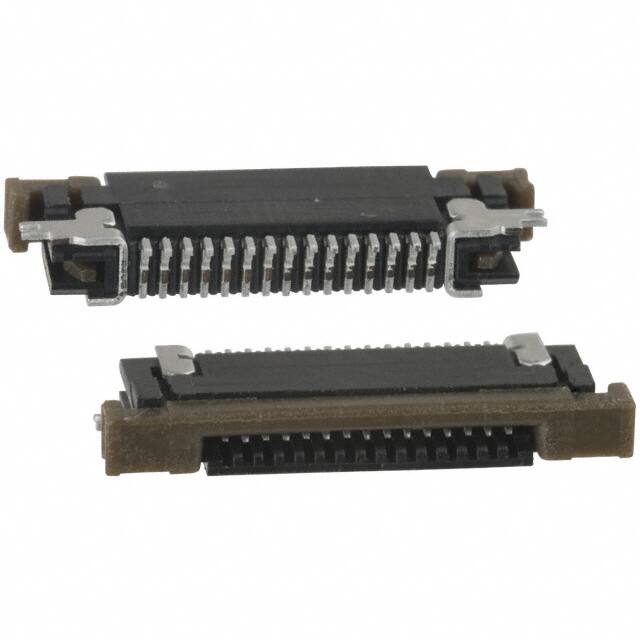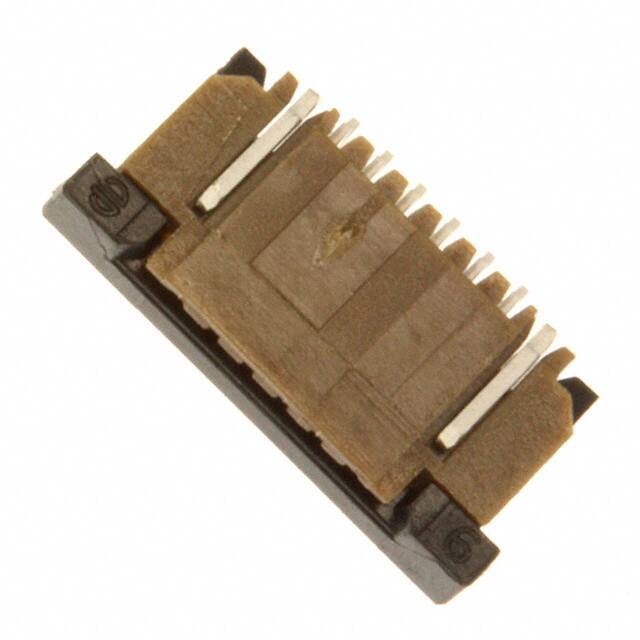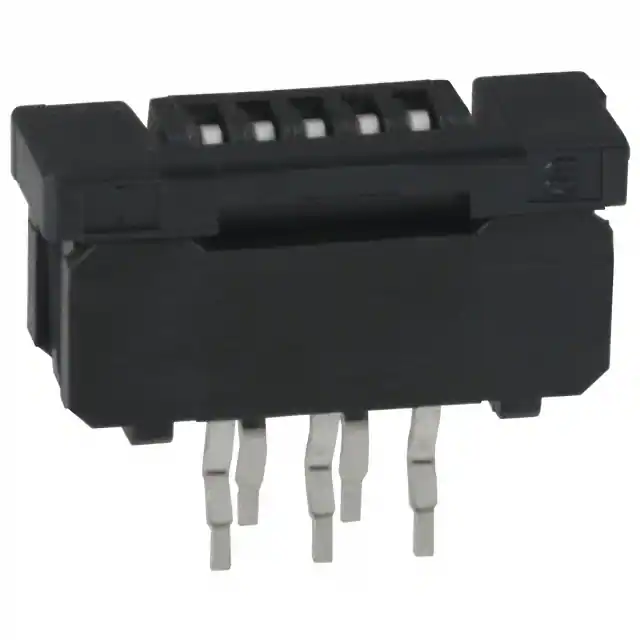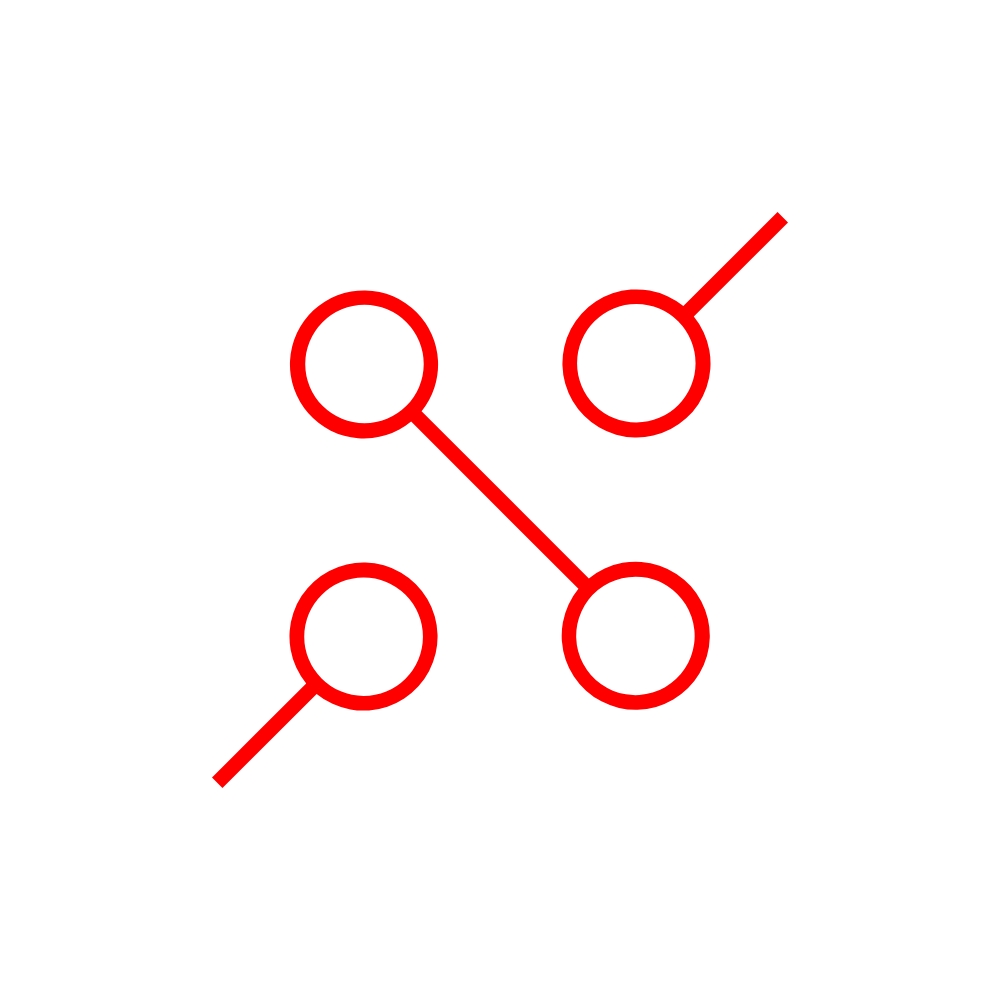Flat Flexible Connectors: Which Type Fits Your Needs?

Flat flexible connectors play a vital role in modern electronics, offering lightweight and compact solutions for various applications. Understanding the differences between FFC and FPC is essential to ensure your system operates efficiently. Each connector type serves unique purposes, from handling high-speed data transmission to fitting into tight spaces. Choosing the wrong connector can lead to performance issues or even system failures. By evaluating your specific application needs, you can select the right option to enhance stability, durability, and functionality in your designs.
Key Takeaways
Understand the difference between FFC and FPC connectors: FFC connectors are simpler and cost-effective, while FPC connectors offer advanced functionality for complex designs.
Evaluate your application needs: Consider factors like electrical performance, environmental conditions, and mechanical properties to select the right connector.
Prioritize flexibility and durability: FPC connectors excel in tight spaces and dynamic environments, making them ideal for wearables and advanced electronics.
Consider temperature and moisture resistance: Choose connectors that can withstand the specific environmental challenges of your application to ensure reliability.
Utilize custom flat flexible cables for unique requirements: Custom solutions can enhance performance and compatibility in specialized applications.
Always verify pin configurations and sizes: Ensuring compatibility with your device's specifications is crucial to avoid connectivity issues.
Consult with experts or manufacturers: Gaining insights from professionals can help you make informed decisions about the best connectors for your needs.
Overview of Flat Flexible Connectors
Flat flexible connectors have revolutionized the way electronic devices are designed and assembled. These connectors provide a lightweight, compact, and efficient solution for linking components in high-performance systems. To make informed decisions, you need to understand their structure, functionality, and unique features.
What Are Flat Flexible Connectors?
Flat flexible connectors are specialized components that connect flexible flat cables or printed circuits to other electronic parts, such as printed circuit boards (PCBs). They are essential in modern electronics, enabling seamless integration in devices where space is limited. These connectors typically consist of a plastic housing with conductive pads or pins that ensure reliable electrical connections. Their design supports high-speed data transmission, making them ideal for advanced electronic systems.
You’ll find these connectors in various applications, including consumer electronics, medical equipment, and automotive systems. Their ability to handle flexibility and compactness makes them indispensable in industries that demand innovative and space-saving solutions.
Key Differences Between FFC and FPC
When choosing between FFC and FPC connectors, understanding their differences is crucial. FFC connectors work with flexible flat cables, which are thin, bendable, and resistant to twisting. These connectors are straightforward and cost-effective, making them suitable for applications like medical devices and consumer electronics.
On the other hand, FPC connectors are designed for flexible printed circuits. These circuits offer higher density, flexibility, and reliability compared to flat cables. FPC connectors excel in demanding applications, such as wearable devices and medical snake catheters, where space constraints and performance are critical.
Key Insight: FFC connectors are simpler and more affordable, while FPC connectors provide advanced functionality for complex designs.
Common Features of Flat Flexible Cables
Flat flexible cables, used with both FFC and FPC connectors, share several common features that enhance their usability:
Flexibility: These cables can bend and twist without breaking, making them ideal for dynamic applications.
Compact Design: Their thin and lightweight structure saves space in electronic devices.
Durability: They resist wear and tear, ensuring long-term reliability.
High-Speed Data Transmission: Both FFC and FPC cables support fast and efficient data transfer, meeting the demands of modern electronics.
These features make flat flexible cables a versatile choice for industries ranging from consumer electronics to industrial automation. By leveraging their unique properties, you can optimize your designs for performance and efficiency.
Types of Flat Flexible Connectors

Flat flexible connectors come in various types, each designed to meet specific application needs. Understanding their features, applications, and advantages will help you make an informed decision.
Standard FFC (Flexible Flat Cable)
Features and Characteristics
Standard FFCs are simple yet effective solutions for connecting electronic components. These cables consist of flat copper conductors sandwiched between two layers of insulating material. Their design ensures flexibility and durability, making them suitable for a wide range of uses. FFCs are available in different pitch sizes, allowing you to choose the right configuration for your device.
You’ll often find these connectors paired with non-ZIF connectors or ZIF connectors. ZIF connectors use a locking mechanism to secure the cable, ensuring a stable connection. Non-ZIF connectors, on the other hand, rely on friction to hold the cable in place, offering a more cost-effective option.
Common Applications
Standard FFCs are widely used in consumer electronics, such as laptops, printers, and televisions. They also play a crucial role in automotive systems, including infotainment units and dashboard displays. Their affordability and ease of installation make them ideal for price-sensitive applications.
Pros and Cons
Pros:
Cost-effective and easy to install.
Lightweight and compact design.
Compatible with both ZIF and non-ZIF connectors.
Cons:
Limited flexibility compared to other types.
May not perform well in high-temperature environments.
Shielded Flat Flexible Cables
Features and Characteristics
Shielded flat flexible cables offer enhanced protection against electromagnetic interference (EMI). They include an additional shielding layer, which minimizes signal loss and ensures reliable data transmission. This makes them an excellent choice for environments with high electrical noise.
These cables are compatible with fpc / ffc connectors, including ZIF connectors, which provide a secure and stable connection. The shielding layer adds a slight increase in thickness, but the overall design remains compact and lightweight.
Common Applications
You’ll find shielded cables in medical devices, industrial automation systems, and high-speed data communication equipment. They are particularly useful in applications where signal integrity is critical.
Pros and Cons
Pros:
Superior EMI protection.
Reliable performance in noisy environments.
Supports high-speed data transmission.
Cons:
Slightly more expensive than standard FFCs.
Increased thickness may limit flexibility.
High-Temperature Flat Flexible Cables
Features and Characteristics
High-temperature flat flexible cables are engineered to withstand extreme heat. They use specialized materials that resist degradation at elevated temperatures, ensuring long-term reliability. These cables maintain their flexibility and electrical performance even in harsh conditions.
High-temperature cables are compatible with both ZIF and non-ZIF connectors, providing versatility in design. Their robust construction makes them suitable for demanding applications.
Common Applications
These cables are commonly used in aerospace, automotive, and industrial sectors. They are ideal for environments where heat resistance is essential, such as engine compartments and manufacturing equipment.
Pros and Cons
Pros:
Excellent temperature resistance.
Durable and long-lasting.
Compatible with a variety of connectors.
Cons:
Higher cost compared to standard options.
Limited availability in certain configurations.
FPC (Flexible Printed Circuit) Connectors
Features and Characteristics
FPC connectors are designed to work with flexible printed circuits, which are thin, lightweight, and highly adaptable. These circuits use a polymer base coated with a protective layer, allowing for intricate wiring patterns. Unlike FFC connectors, which rely on straight-through conductors, FPC connectors support multiple traces that can bend, angle, or even integrate shielding. This flexibility makes them ideal for compact and complex designs.
FPC connectors often include advanced locking mechanisms like ZIF connectors. A ZIF connector ensures a secure and stable connection by using a locking lever to hold the circuit in place. This feature minimizes the risk of disconnection, even in high-vibration environments. Non-ZIF connectors, while less common in FPC applications, may still be used for simpler setups where cost is a priority.
Did You Know? FPC connectors can support single, double, or multilayered circuits, offering unmatched versatility for high-end electronic devices.
Common Applications
FPC connectors excel in applications requiring compactness and high reliability. You’ll find them in smartphones, tablets, and wearable devices, where space constraints demand innovative solutions. They also play a critical role in medical equipment like imaging devices and surgical tools, where precision and durability are essential.
In automotive systems, FPC connectors are used in advanced driver assistance systems (ADAS) and infotainment units. Their ability to handle high-speed data transmission makes them indispensable in these demanding environments.
Pros and Cons
Pros:
High flexibility and adaptability for intricate designs.
Excellent durability and reliability in harsh conditions.
Compatible with ZIF connectors for secure connections.
Cons:
Higher cost compared to FFC connectors.
Complex manufacturing process increases lead time.
Custom Flat Flexible Cables
Features and Characteristics
Custom flat flexible cables offer tailored solutions for unique application needs. These cables combine the benefits of standard FFC and FPC designs, allowing you to specify materials, dimensions, and configurations. Whether you need enhanced flexibility, increased durability, or specialized shielding, custom FFC cables can meet your exact requirements.
Custom cables often integrate features like ZIF connectors for secure connections or non-ZIF connectors for cost-effective setups. The ability to customize ensures compatibility with a wide range of devices and environments, from consumer electronics to industrial machinery.
Pro Tip: Custom FPC parts can include additional layers or specialized coatings to improve performance in extreme conditions.
Common Applications
Custom flat flexible cables are widely used in industries requiring unique designs. In robotics and automation, they enable precise movements and reliable connections. Aerospace applications benefit from their lightweight and durable construction, which reduces overall system weight without compromising performance.
Medical devices also rely on custom cables for specialized functions, such as connecting imaging sensors or powering portable diagnostic tools. These cables ensure optimal performance while meeting stringent regulatory standards.
Pros and Cons
Pros:
Tailored to meet specific application needs.
Compatible with both ZIF and non-ZIF connectors.
Enhanced performance through material and design customization.
Cons:
Higher cost due to bespoke manufacturing.
Longer lead times compared to standard options.
Key Factors to Consider When Choosing Flat Flexible Connectors
Selecting the right flat flexible connectors requires careful evaluation of several critical factors. Each application has unique demands, and understanding these factors ensures optimal performance, reliability, and longevity for your system.
Electrical Performance
Voltage and Current Ratings
The voltage and current ratings of a connector determine its ability to handle electrical loads safely. FFC and FPC connectors are designed to meet specific electrical requirements. For instance, FFC connectors often suit low-power applications, while FPC connectors can handle more complex circuits with varying impedance levels. Always verify that the connector you choose aligns with the power demands of your device to avoid overheating or failure.
Signal Integrity
Signal integrity is crucial for applications requiring high-speed data transmission. Shielded FPC / FFC connectors provide enhanced protection against electromagnetic interference (EMI), ensuring stable and reliable signal flow. A ZIF connector, with its secure locking mechanism, minimizes the risk of disconnection, which is vital for maintaining signal quality. Non-ZIF connectors, while cost-effective, may not offer the same level of stability in high-performance environments. Prioritize connectors that support your system's data transmission needs without compromising signal clarity.
Environmental Suitability
Temperature Resistance
Temperature resistance plays a significant role in determining a connector's durability in extreme conditions. High-temperature flat flexible connectors are ideal for environments like automotive engine compartments or industrial machinery. These connectors use specialized materials that withstand heat without degrading. If your application involves exposure to elevated temperatures, ensure the connector's specifications meet the required thresholds.
Moisture and Chemical Resistance
Moisture and chemical resistance are essential for connectors used in harsh environments. FPC / FFC connectors with protective coatings or materials resist corrosion and maintain functionality in challenging conditions. For example, shielded cables paired with ZIF connectors offer added protection against environmental factors. Evaluate the operating environment of your device and select connectors that can endure moisture, chemicals, or other potential contaminants.
Mechanical Properties
Flexibility and Bend Radius
Flexibility and bend radius determine how well a connector adapts to movement or tight spaces. FFC connectors, with their straight-through conductors, provide basic flexibility suitable for simple designs. FPC connectors, on the other hand, excel in applications requiring intricate bends or angles. Their ability to integrate multiple traces makes them ideal for compact and dynamic systems. Choose a connector that matches the physical demands of your application to prevent damage or wear over time.
Durability and Lifespan
Durability and lifespan are critical for ensuring long-term reliability. ZIF connectors, with their secure locking mechanisms, reduce wear and tear caused by repeated connections. Non-ZIF connectors, while less durable, may suffice for applications with minimal handling. Custom flat flexible connectors allow you to specify materials and designs that enhance durability. Consider the expected usage and lifespan of your device when selecting a connector to avoid premature failures.
Pro Tip: Always consult with manufacturers or experts to ensure the connector you choose meets all electrical, environmental, and mechanical requirements for your specific application.
Compatibility with Devices
Connector Types and Pin Configurations
Choosing the right connector type and pin configuration is essential for ensuring compatibility with your device. FFC and FPC connectors differ significantly in their design and functionality. FFC connectors are designed to interface with flexible flat cables, which consist of straight-through conductors. These connectors are straightforward and work well for applications requiring basic electrical connections. They are often used in devices where simplicity and cost-effectiveness are priorities.
On the other hand, FPC connectors are tailored for flexible printed circuits. These circuits feature intricate wiring patterns and can include single, double, or multilayered structures. FPC connectors support multiple traces that can bend, angle, or integrate shielding, making them ideal for complex and compact designs. Their advanced configurations allow for varying pinouts and impedance levels, which are crucial for high-performance systems.
Pro Tip: Always verify the pin configuration of your connector to ensure it aligns with your device's requirements. Mismatched pinouts can lead to connectivity issues or even damage your components.
Size and Space Constraints
Space constraints play a critical role in selecting the right connector for your device. FFC connectors, with their simple and flat design, are perfect for applications where space is limited but not extremely tight. Their compact structure allows them to fit into smaller devices without compromising functionality. However, they may not offer the flexibility needed for intricate layouts.
FPC connectors excel in environments with severe space limitations. Their ability to work with flexible printed circuits enables them to adapt to tight spaces and unconventional shapes. These connectors are commonly used in devices like smartphones, tablets, and wearable technology, where every millimeter counts. Additionally, FPC connectors often include ZIF mechanisms, which secure the connection without adding bulk. This feature ensures a stable and reliable connection even in high-vibration environments.
Did You Know? ZIF connectors are particularly useful in compact devices because they provide a secure connection while minimizing the risk of accidental disconnection.
When evaluating size and space constraints, consider the physical dimensions of both the connector and the cable. Ensure that the chosen connector fits seamlessly into your device's design without causing interference or requiring significant modifications.
Comparing FFC and FPC Connectors for Specific Applications

Flat flexible connectors, including both FFC and FPC types, serve diverse industries by addressing specific application needs. Their unique features and adaptability make them indispensable in modern electronics. Let’s explore how these connectors perform in consumer electronics, automotive systems, and industrial or medical equipment.
Consumer Electronics
Smartphones and Tablets
Smartphones and tablets demand compact, lightweight, and reliable components. FFC connectors provide a cost-effective solution for connecting displays, touchscreens, and internal circuits. Their flat design saves space, ensuring seamless integration into slim devices. These connectors also support high-speed data transmission, which is essential for smooth performance in multimedia applications.
FPC connectors, however, excel in handling intricate wiring patterns within these devices. Their ability to bend and adapt to tight spaces makes them ideal for advanced designs. For instance, FPC connectors often connect flexible printed circuits in foldable smartphones, where durability and flexibility are critical.
Key Insight: FFC connectors suit basic connections in smartphones, while FPC connectors handle complex layouts in high-end models.
Wearable Devices
Wearable devices, such as fitness trackers and smartwatches, require connectors that balance flexibility and durability. FPC connectors dominate this space due to their ability to work with flexible printed circuits. These circuits allow for compact designs that fit snugly into small, curved enclosures. Additionally, FPC connectors ensure reliable performance even in high-vibration environments, such as during physical activities.
FFC connectors, though less common in wearables, can still play a role in simpler designs. They offer a straightforward and affordable option for connecting basic components like sensors or displays.
Pro Tip: When designing wearable devices, prioritize FPC connectors for their adaptability and reliability in compact spaces.
Automotive Applications
Infotainment Systems
Modern infotainment systems rely on connectors that support high-speed data transfer and resist environmental challenges. FFC connectors provide an efficient solution for linking displays, touchscreens, and control units. Their lightweight and flat design simplifies assembly and reduces overall system weight.
FPC connectors, on the other hand, shine in advanced infotainment systems requiring intricate wiring. Their ability to handle multiple traces and integrate shielding ensures stable performance, even in electrically noisy environments. This makes them a preferred choice for high-end automotive displays and multimedia systems.
Did You Know? Shielded FPC connectors minimize electromagnetic interference, ensuring clear audio and video signals in infotainment systems.
Advanced Driver Assistance Systems (ADAS)
ADAS technologies, such as lane-keeping assistance and collision detection, demand connectors with exceptional reliability and performance. FPC connectors meet these requirements by supporting flexible printed circuits that handle high-speed data transmission. Their compact design allows for integration into tight spaces, such as camera modules or radar systems.
FFC connectors, while less flexible, can still contribute to simpler ADAS components. For example, they may connect sensors or control units in systems with fewer space constraints.
Key Takeaway: FPC connectors provide the precision and reliability needed for advanced ADAS applications, while FFC connectors suit less complex setups.
Industrial and Medical Equipment
Robotics and Automation
Robotics and automation systems require connectors that withstand constant movement and mechanical stress. FPC connectors excel in these environments due to their flexibility and durability. They enable precise connections in robotic arms or automated machinery, ensuring consistent performance over time.
FFC connectors also play a role in industrial applications, particularly in simpler systems. Their cost-effectiveness and ease of installation make them suitable for connecting basic components like sensors or control panels.
Pro Tip: For dynamic systems with frequent movement, choose FPC connectors to ensure long-term reliability.
Medical Imaging Devices
Medical imaging devices, such as MRI scanners and ultrasound machines, demand connectors that deliver high-speed data transmission and resist environmental factors. FPC connectors meet these needs by supporting flexible printed circuits with advanced shielding. This ensures accurate signal transmission, which is critical for producing clear and reliable images.
FFC connectors, while less advanced, can still serve in auxiliary functions within medical devices. For instance, they may connect displays or control units in systems with lower performance demands.
Did You Know? Custom FPC connectors can include additional layers or coatings to meet the stringent requirements of medical applications.
Choosing between FFC and FPC connectors requires a clear understanding of their differences and applications. FFC connectors offer simplicity and cost-effectiveness, while FPC connectors provide advanced functionality for intricate designs. Your decision should align with your specific needs, considering factors like electrical performance, environmental conditions, and mechanical properties. Evaluate voltage ratings, temperature resistance, and space constraints to ensure compatibility with your device. For tailored solutions, consult manufacturers or experts who can guide you in selecting the ideal flat flexible connectors for your application.
FAQ
What is the main difference between FFC and FPC connectors?
FFC connectors work with flexible flat cables, which consist of flat copper conductors sandwiched between insulating layers. FPC connectors, on the other hand, are designed for flexible printed circuits. These circuits use chemical etching to create intricate wiring patterns, allowing for single, double, or multilayered structures. FFC connectors are simpler and more cost-effective, while FPC connectors offer greater functionality and adaptability for complex designs.
Which connector type is more cost-effective?
FFC connectors are generally more affordable due to their straightforward design and manufacturing process. They are ideal for applications where cost is a priority and advanced functionality is not required. FPC connectors, while more expensive, provide enhanced features like flexibility, higher density, and better performance in demanding environments.
Can FFC and FPC connectors handle high-speed data transmission?
Yes, both FFC and FPC connectors support high-speed data transmission. However, FPC connectors often perform better in this area due to their ability to integrate shielding and handle complex wiring patterns. If your application requires superior signal integrity, FPC connectors may be the better choice.
Are FFC connectors suitable for compact devices?
FFC connectors are suitable for compact devices, but they may not be the best option for extremely tight spaces. Their flat and lightweight design makes them a good fit for many small devices. However, FPC connectors excel in compact environments due to their ability to bend and adapt to intricate layouts.
How do I choose between ZIF and non-ZIF connectors?
ZIF (Zero Insertion Force) connectors use a locking mechanism to secure the cable, providing a stable and reliable connection. They are ideal for applications requiring frequent connections or high vibration resistance. Non-ZIF connectors rely on friction to hold the cable in place, making them a more cost-effective option for simpler setups. Your choice depends on the level of stability and durability your application demands.
Are shielded flat flexible cables necessary for all applications?
Shielded flat flexible cables are not necessary for all applications. They are essential in environments with high electromagnetic interference (EMI) or where signal integrity is critical. For example, medical devices and industrial automation systems often benefit from shielded cables. In less demanding environments, standard FFC cables may suffice.
Can FPC connectors handle extreme temperatures?
Yes, FPC connectors can handle extreme temperatures when paired with high-temperature flat flexible cables. These cables use specialized materials that resist heat degradation, making them suitable for harsh environments like automotive engine compartments or industrial machinery. Always check the temperature specifications of the connector and cable to ensure compatibility with your application.
What industries commonly use custom flat flexible cables?
Custom flat flexible cables are widely used in industries requiring unique designs. Robotics and automation systems rely on them for precise movements and reliable connections. Aerospace applications benefit from their lightweight and durable construction. Medical devices also use custom cables for specialized functions, such as connecting imaging sensors or powering diagnostic tools.
How do I ensure compatibility with my device?
To ensure compatibility, verify the connector type, pin configuration, and size requirements of your device. FFC connectors work well with flexible flat cables, while FPC connectors are designed for flexible printed circuits. Consider the physical dimensions and space constraints of your device. Consulting with manufacturers or experts can help you select the right connector for your specific needs.
Are custom connectors worth the investment?
Custom connectors are worth the investment if your application has unique requirements that standard options cannot meet. They allow you to specify materials, dimensions, and configurations tailored to your needs. While they may cost more and take longer to produce, custom connectors can enhance performance, durability, and compatibility in specialized applications.
See Also
Essential Rectangular Connectors for Industrial Applications
Finding the Ideal Wire Connector for Your Needs
Understanding Circular Connectors for Informed Decisions
Exploring Various Types of RF Connectors Available
Dependable Modular Connectors for Industrial Automation Uses
